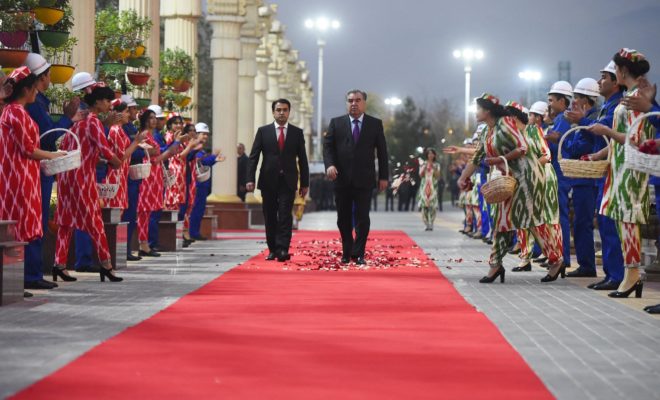On March 1, the Republic of Tajikistan held elections for the Majlisi Namoyandagon, the lower house of the country’s bicameral Parliament. A total of 241 candidates contested the elections, 65 for the 22 party-list seats and 176 for the 41 constituency seats.
Issues
The Social Democratic Party (SDP) was the only opposition group that was allowed to contest in the elections and they failed to meet the 5 per cent threshold for representation in parliament, while the Agrarian Party secured 7 seats, the Party of Economic Reforms won five and the Communist Party got two seats. The Democratic Party and the Socialist Party got one seat each by the party lists.
For many people in Tajikistan, these elections were merely ceremonial. “These elections mean nothing for the government, for MPs and for the population itself. Parliament is a body of secondary importance, it has no impact and represents nothing of interest,” Parviz Mullojanov, a political analyst, told Eurasianet before the elections.
True to his words, the president’s party won the majority vote after the elections. It will be instructive to note that campaigns were not allowed in the lead up to the elections and that irregularities were reported. Additionally, the government controls the media environment and clamps down on dissenting voices and opposition groups. This puts the credibility and fairness of the elections into question.
Who Won?
President Emomali Rahmon’s ruling party won the March 1 parliamentary elections as anticipated and is set to retain control over parliament. The Central Election Commission Chairman Bakhtiyor Khudoyorzoda announced preliminary results on March 2 showing 50.4 per cent of the ballots cast supported the ruling People’s Democratic Party, securing 47 seats in the 63-seat Majlisi Namoyandagon (Assembly of Representatives). The election commission did not announce the party affiliations of the winners in those constituencies but said that a total of six parties had secured at least one seat each in the legislature.
How Tajikistan Elections Work
The 63 members of the Assembly of Representatives are elected by a mixed-method: 41 members are elected in single-member constituencies using the two-round system where the voter casts a single vote for their chosen candidate. If no candidate receives enough of the vote in the first round, then the second round of voting is held. The other 22 seats are elected by proportional representation in a single nationwide constituency, with an electoral threshold of 5%. Voters cast a single ballot for a candidate in their single-member constituency, with the total votes received across all constituencies used to determine the proportional seats. In each constituency, voter turnout is required to be at least 50% for the election to be declared valid.[


